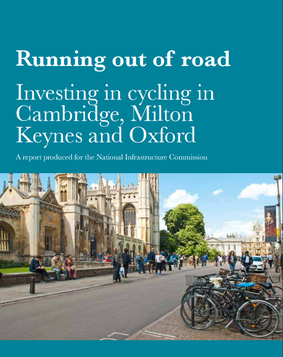|
The report by former London cycling commissioner Andrew Gilligan in July 2018 highlights the need for £200m worth of improved cycling infrastructure in Cambridge, Oxford and Milton Keynes. We have presented some interesting facts taken from the report:
0 Comments
Leave a Reply. |
AuthorsCo-CAFE is led by Tim Jones (Reader in Urban Mobility) with Ben Spencer (Research Fellow) and Tom Shopland (Co-CAFE project administrator) based in the School of the Built Environment at Oxford Brookes University. Archives
February 2020
Categories |
|
Oxford Brookes University
School of the Built Environment +44 1865 48 4061 |
|
Funded by the Lifelong Health and Wellbeing cross-Council programme. Grant No. EP/KO37242/1
|


 RSS Feed
RSS Feed


